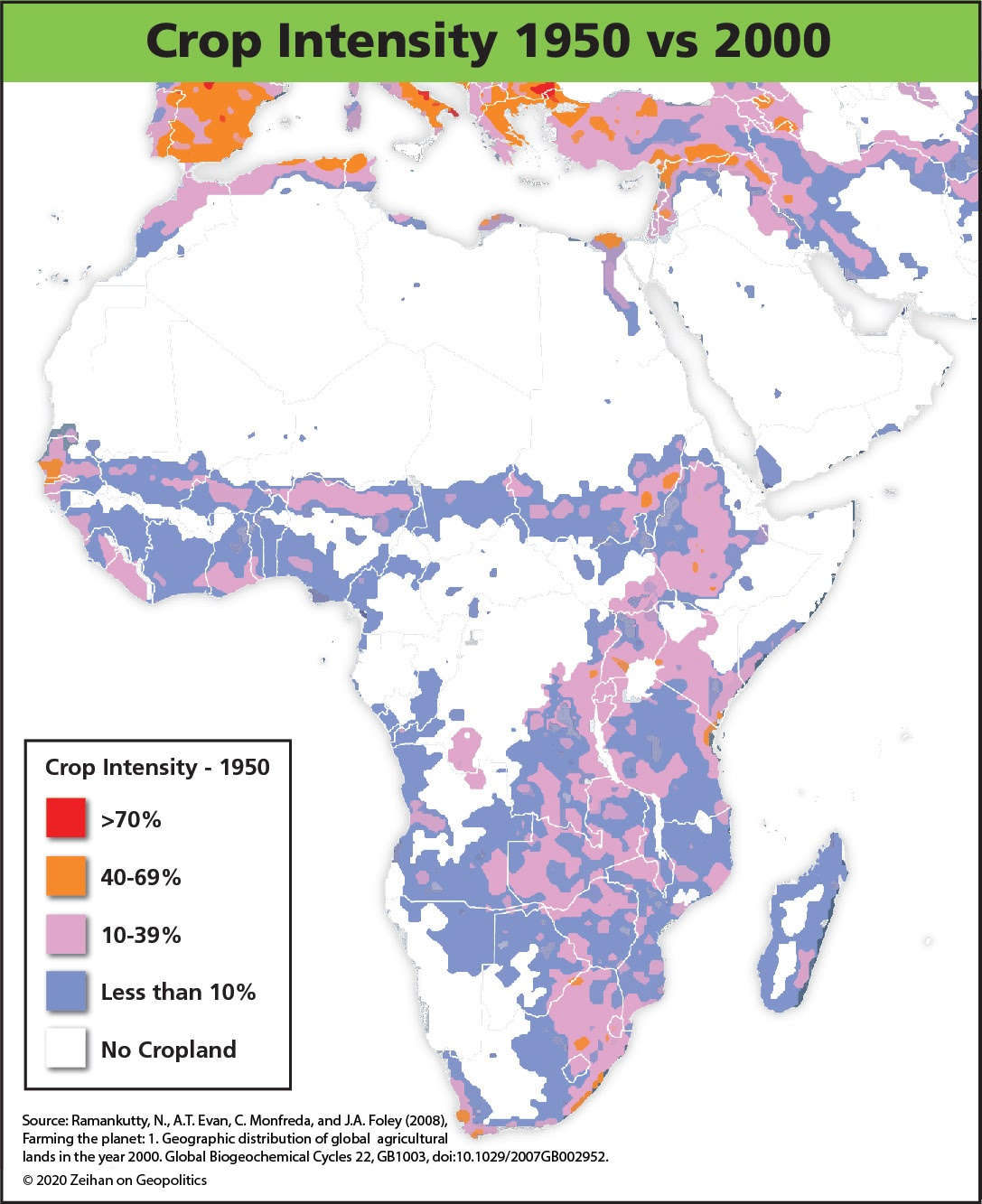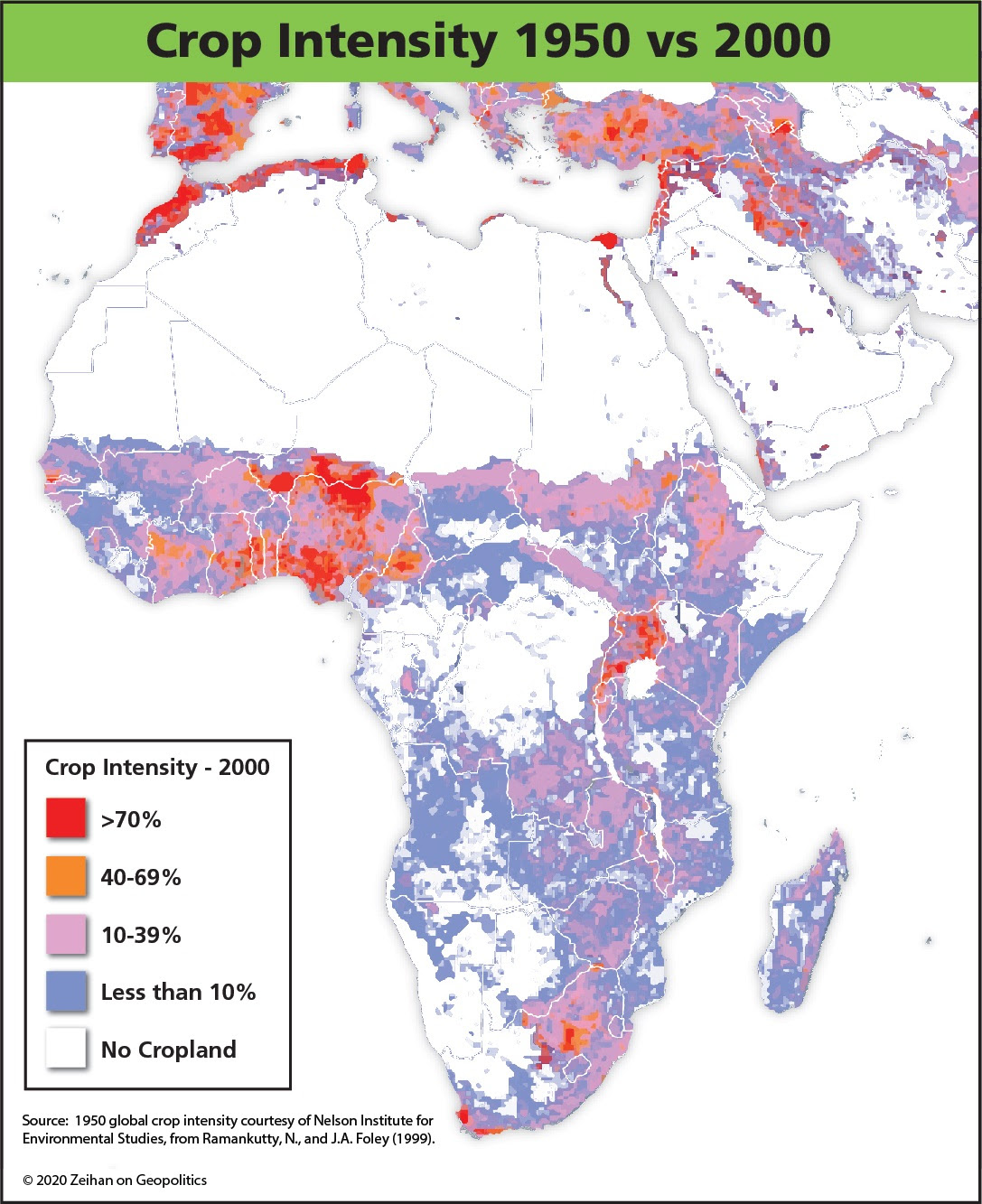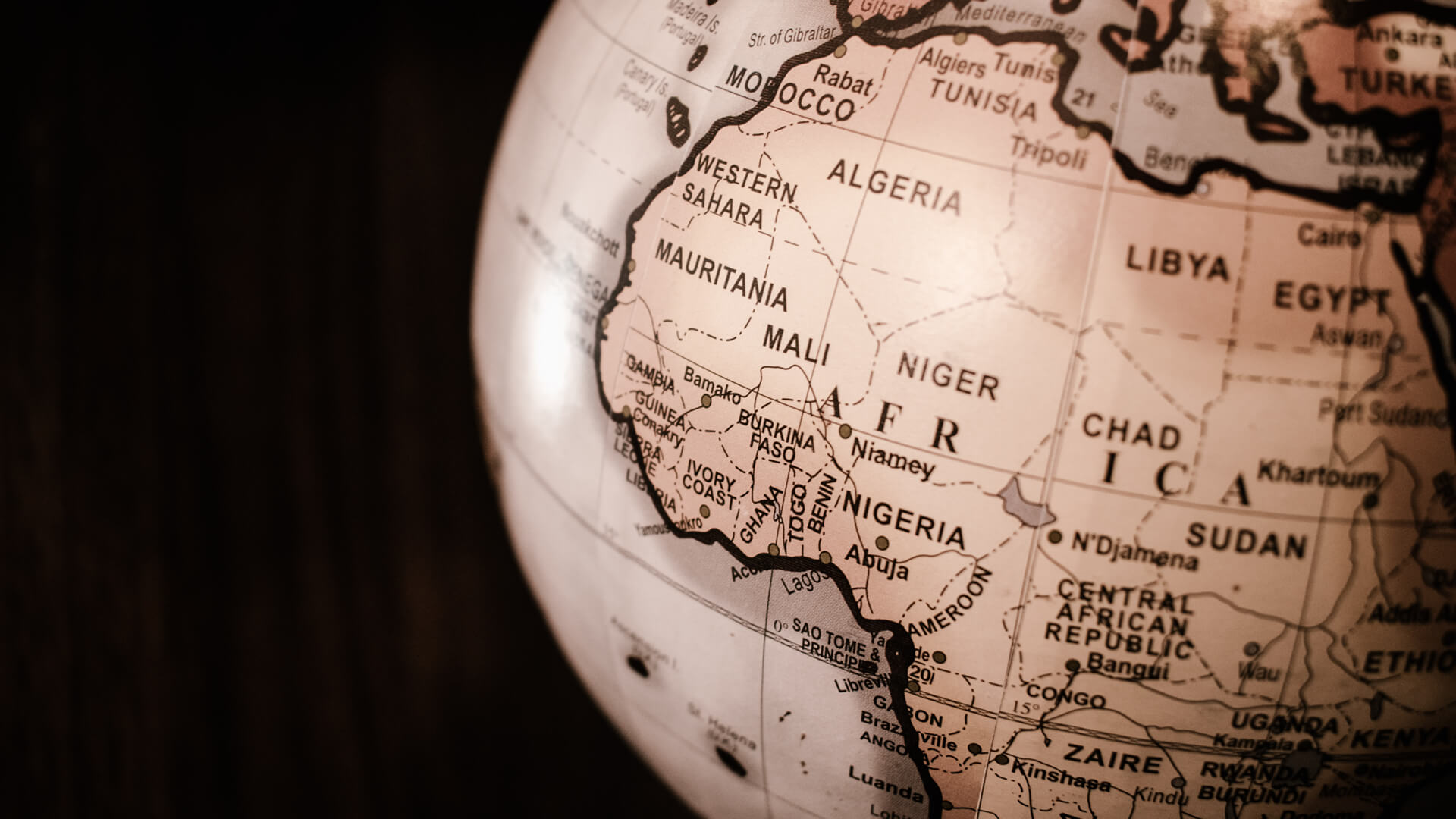Below is one of my favorite (if incredibly depressing) graphics from our most recent book, Disunited Nations.
Before Africa began the industrialization process, only the best lands on the continent were under cultivation. As a rule, slopes, jungle, arids, and marshes make for horrible farmland, and Africa was no exception. Africa in 1950 had well less than one-quarter of its land mass under crop, and yields per acre were decidedly pre-industrial.
But then the American-led globalized Order occurred. Africans were for the first time able to tap industrial inputs en masse: fertilizers, pesticides, herbicides, fungicides, better seeds and mechanical equipment. And above, finance, to allow for the purchase of fertilizers, pesticides, herbicides, fungicides, better seeds and mechanical equipment.


Fast-forward to the year 2000 and Africa became a continent changed. Add industrial inputs to okish lands and the Africans got great yields. Add industrial inputs to crap lands and the Africans got okish yields. In five decades, the Africans presided over the quintupling of their local food supplies. The reason we think of Africa as food insecure is because most African countries … are. Output may have increased by a factor of five, but during the same time window Africa’s population increased by a factor of six.
Industrialization is great…until it’s not. Nearly all of Africa’s agricultural inputs are imported from a different continent. Should anything happen to those input flows, much of what has made modern African agriculture successful will unwind with a vengeance…and Africa’s population will still need to be fed.
We’ve been babystepping to a collapse of agricultural supply chains for over a decade, but the sharp shock of the Ukraine War has kicked the deglobalization process into high gear. This calendar year we will experience breakdowns in the supply systems that make industrialized agriculture possible, and not just in Africa. The Middle East and East Asia also face a catastrophic unwinding of the input streams that keep regional populations alive, while major agricultural producers like Australia and Brazil will face challenges far beyond what their systems are capable of tolerating. The result is the same in all of them: lower yields.
And lower yields means famine.
Join us March 11 as Peter Zeihan walks us through the end of global agricultural as we know it. It will be a wide-ranging discussion that encapsulates all the many trends in play today, from Chinese Communist Party Chairman Xin Jinping’s cult of personality, to dangerously low energy investment to, of course, the Ukraine War.
REGISTER FOR THE UKRAINE WAR: AGRICULTURE EDITION
Can’t make it to the live webinar? No problem! All paid registrants will be sent a link to access the recording of the webinar and Q&A session, as well as a copy of presentation materials, after the live webinar concludes.








